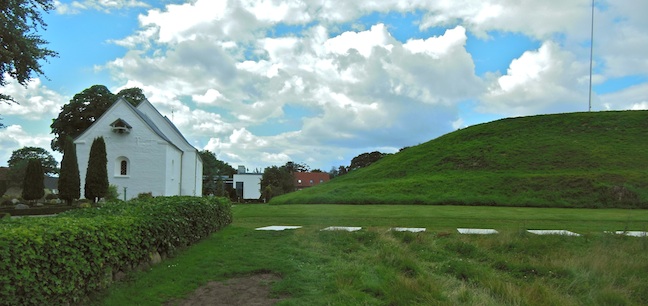
Jelling church and Thyra's mound, Denmark
photo Elroy Christenson 2016
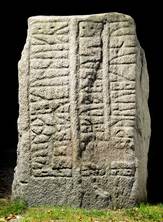 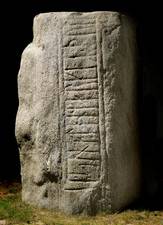 |
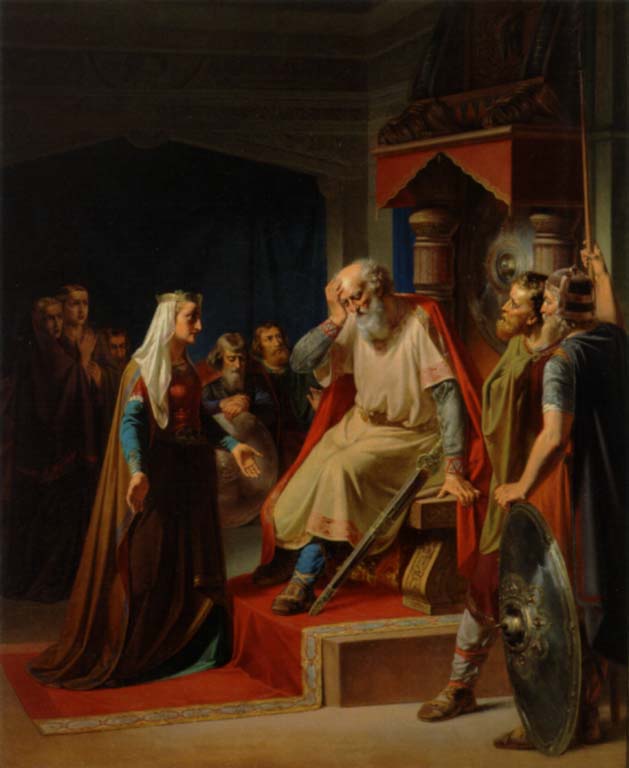 |
| Gorm's stone to Thyra | Old Gorm, painting from the 1800's |
Jelling
Kirke and Mounds
Vejle commune, central Jutland,
Denmark
The Jelling Church

  |
 |
| Gorm's stone to Thyra | Old Gorm, painting from the 1800's |
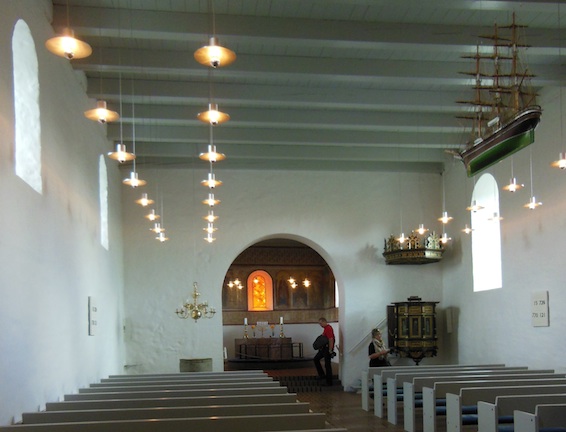 |
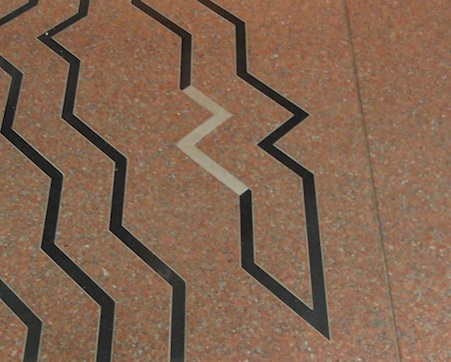
|
| Interior
of Jelling church, photo by Elroy Christenson 2016 |
floor
marker for burial spot of "Old Gorm" King of Denmark photo by Elroy Christenson 2016 |
"King Harald bade these memorials to be made after Gorm, his father, and Thyra, his mother. The Harald who won the whole of Denmark and Norway and turned the Danes to Christianity."These stones are revered as the birth certificate of the Danish nation. These stones are difficult to photograph due to the reflections from the protective glass. While exposed to the elements they also were subject to vandalism from "taggers" and have deteriorated in recent history compared with earlier photos. Gunhild Gormsdatter, Harald I "Bluetooth"s sister may have had more influence by giving birth to several kings of Norway. She was known for her beauty, power, scheming and magic.
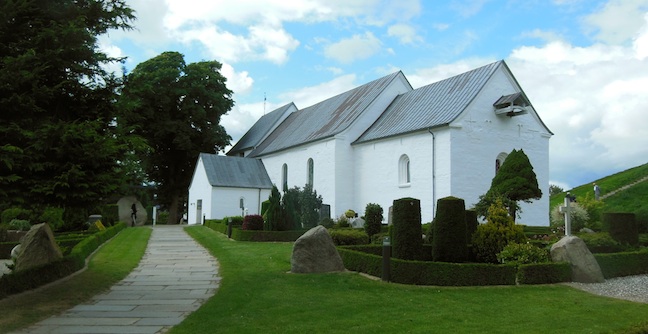
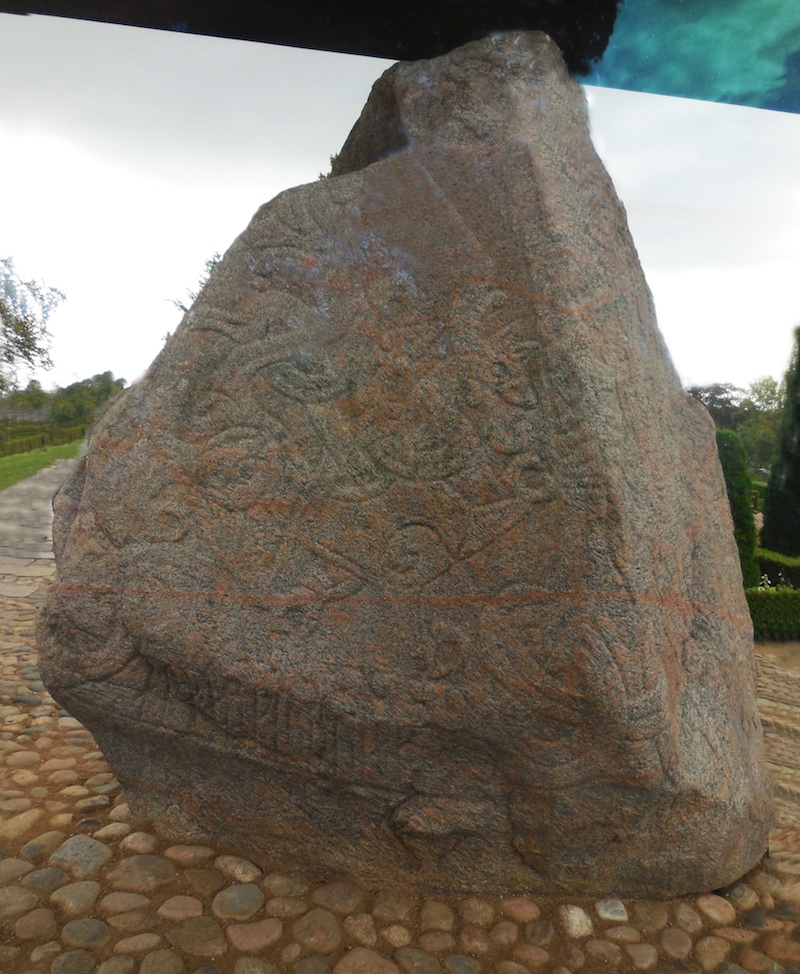
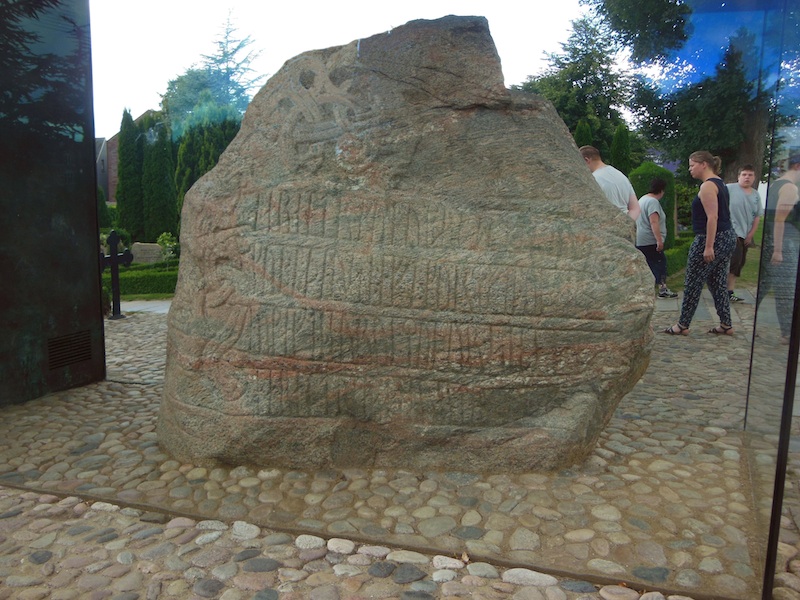
Recently archaeologists have discovered 400 Iron Age houses in
the area near Jelling. This shows that this region was
important in very early history of Denmark. There is evidence of
rebuilding the same types of structures over a period of
generations in the same location. Tools, living habits are
continuing to be studied and should give further information about
this rather unknown period of Danish history about 300-600
CE. [Western. 10/26/2017]
source:
Elroy's Family Index || Denmark Family Locations || Ancestor Chart #1
_________________________________________________________________________________________________






All information and
photos included within these pages was developed by
the help of hundreds of researchers. The information
here is for the express purpose of personal
genealogical research and is freely offered as long
as this site is listed as a source. It may not be
included or used for any commercial purpose or
included in any commercial site without the express
permission of Elroy Christenson.
Copyright Elroy Christenson 1998-2017.